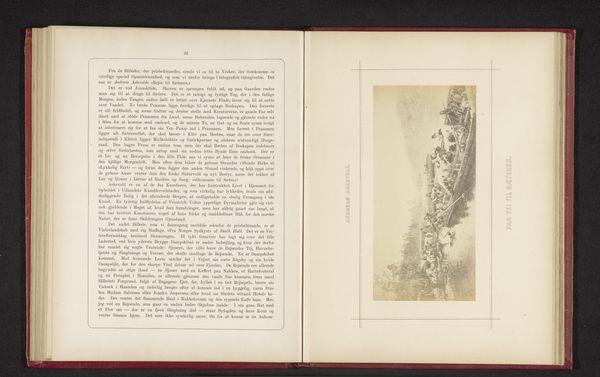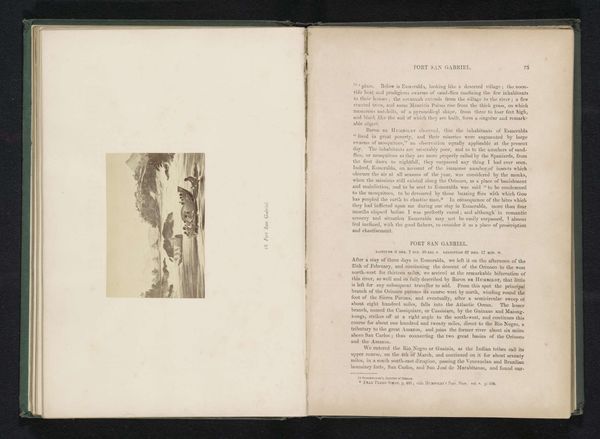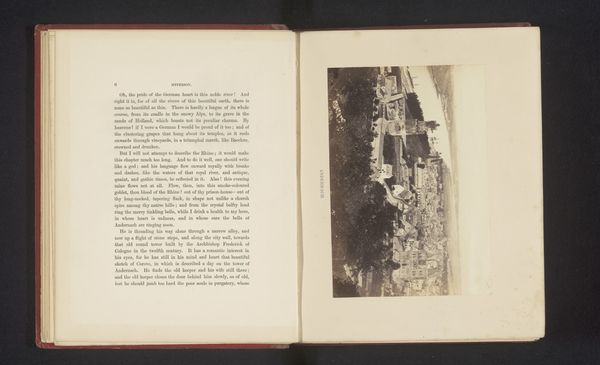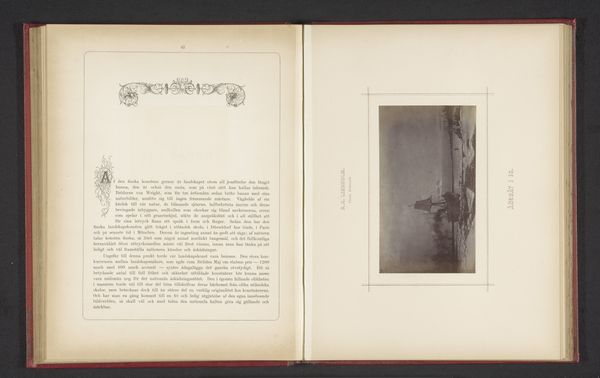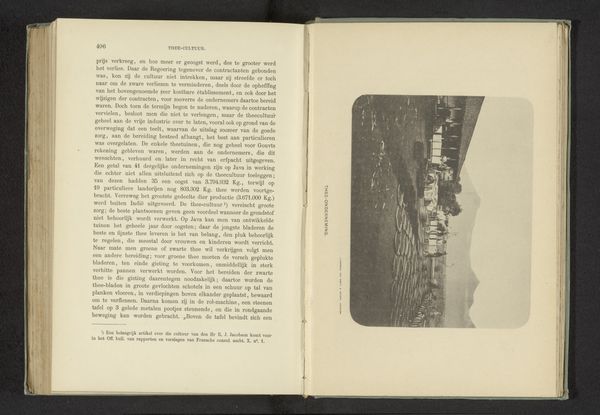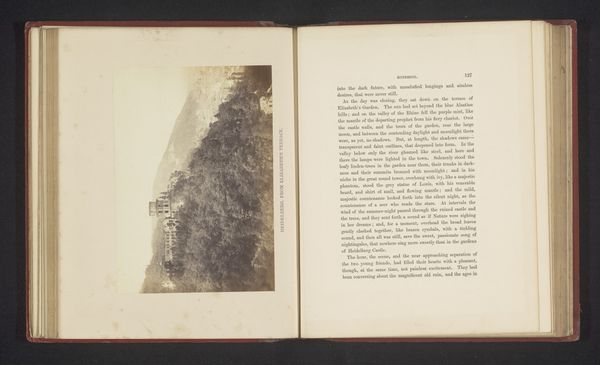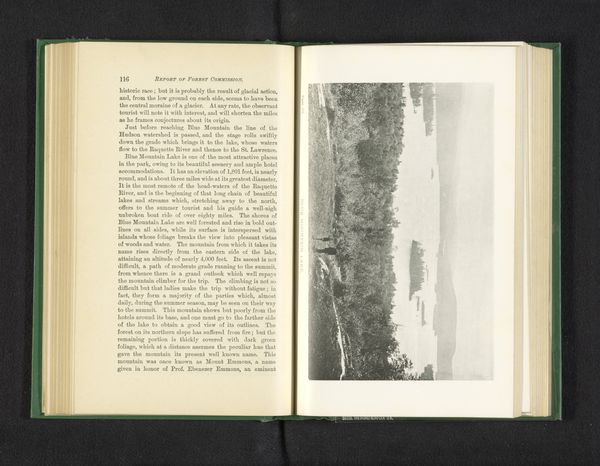
Fotoreproductie van een schilderij van een nederzetting in een woestijn door Harald Jerichau before 1879
0:00
0:00
print, paper, photography
#
script typeface
#
aged paper
#
book binding
#
homemade paper
#
paper non-digital material
#
paperlike
# print
#
landscape
#
paper
#
photography
#
ancient-mediterranean
#
thick font
#
history-painting
#
handwritten font
#
letter paper
#
historical font
Dimensions: height 92 mm, width 215 mm
Copyright: Rijks Museum: Open Domain
Curator: Looking at this stark image, I am struck by how powerfully barren and monumental it feels. There is a quiet strength that emanates from the ancient stones against the desert landscape. Editor: What resonates most with me is the context within which this image lives. The item here is a photographic reproduction of a painting titled, "Fotoreproductie van een schilderij van een nederzetting in een woestijn door Harald Jerichau," placing it before 1879, inviting exploration into the power structures impacting its subjecthood. Curator: I agree completely, thinking about it now I notice its haunting atmosphere and its relation to the perception and romanticisation of ruins that often reinforces a colonial gaze on marginalized regions. Editor: This piece evokes questions surrounding Orientalism in the nineteenth century. I consider the photographer and painter's intentions. The ruins are not simply aesthetic objects. Curator: Absolutely, those ruined columns carry weighty symbolism. Architectural elements reduced to their basic form stand as testaments of lost power, resonating as symbols of temporal fragility and societal decline. It also forces viewers to confront themes like loss, memory, and mortality in light of present societal complexities. Editor: The use of a print to document a painted depiction of ruins further complicates it by reminding us that the perception of place depends on an active layering of different forms and periods. As such the history is told by whoever manages to manipulate the perception of material information like photography or paintings. Curator: Examining this intersection, the themes of survival, resilience, and resistance in these regions often silenced during these times of historical change stand boldly now. Editor: It's quite revealing how considering its intersectional dimensions helps us deconstruct established perceptions while embracing marginalized populations, amplifying understanding of heritage, identity, and place. Curator: The stark portrayal is now a catalyst for recognizing the silenced and forgotten, inviting dialogues of contemporary resistance and empowerment. Editor: Looking closer, I will take this enhanced consideration and apply to the world and spaces that exist around me for deeper contemplation of both their historical origins and projected paths forward.
Comments
No comments
Be the first to comment and join the conversation on the ultimate creative platform.
